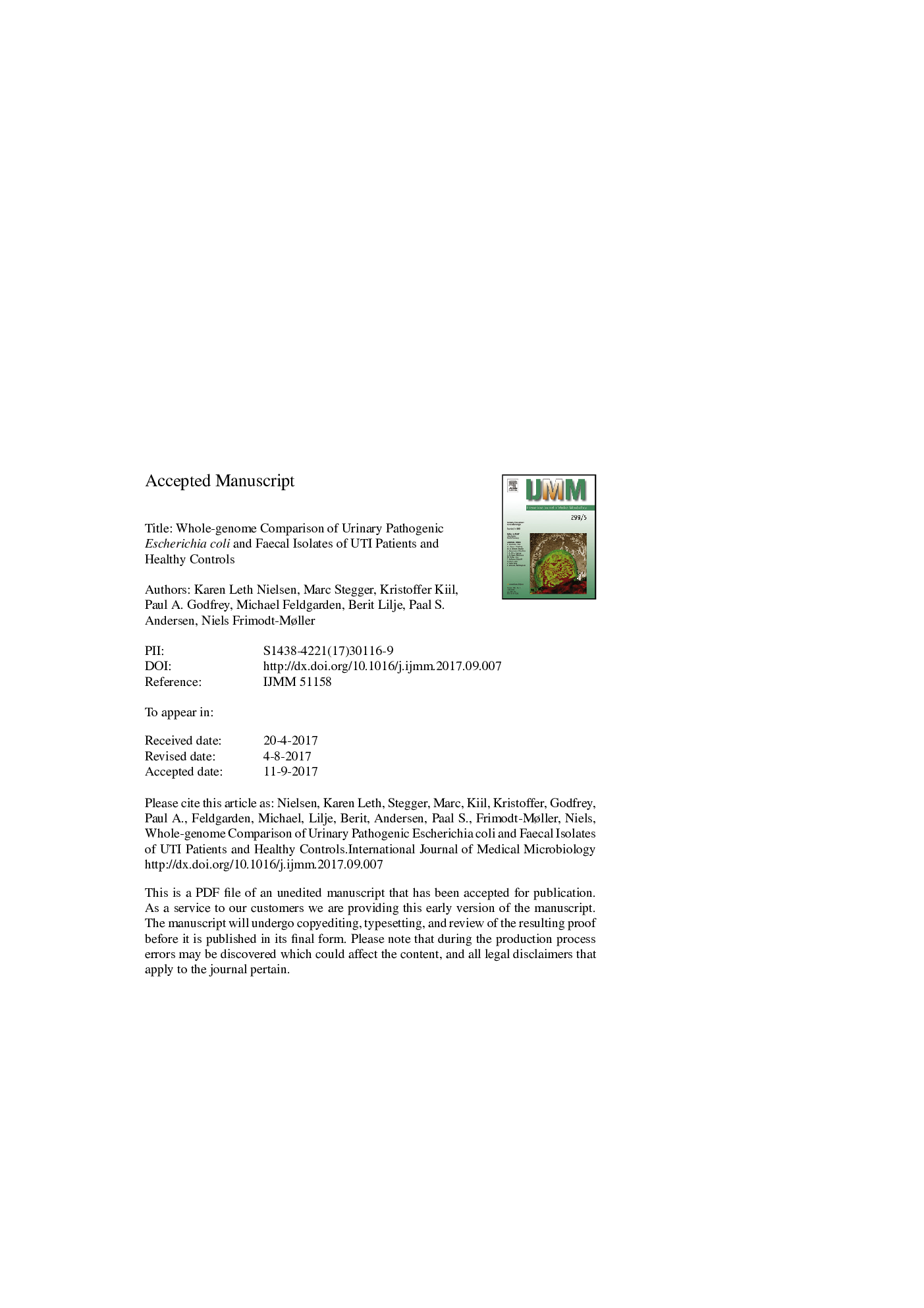| Article ID | Journal | Published Year | Pages | File Type |
|---|---|---|---|---|
| 8385041 | International Journal of Medical Microbiology | 2017 | 32 Pages |
Abstract
In summary, the results showed that (i) healthy women who had never previously had UTI carried faecal E. coli which were overall closely related to UTI and faecal isolates from UTI patients; (ii) UTI isolates do not cluster separately from faecal-only isolates based on SNP analysis; and (iii) 22 gene families of a genomic island, putative T6SS proteins as well as specific metabolism and virulence associated proteins were significantly more common in UTI isolates compared to faecal-only isolates and (iv) evolution of fimH for these isolates was not linked to the clinical source of the isolates, apart from the mutation combination N70S/S78N, which was correlated to UTI isolates of phylogroup B2. Combined, these findings illustrate that faecal and UTI isolates, as well as faecal-only and faecal-UTI isolates, are closely related and can only be distinguished, if at all, by their accessory genome.
Keywords
Related Topics
Life Sciences
Biochemistry, Genetics and Molecular Biology
Biochemistry, Genetics and Molecular Biology (General)
Authors
Karen Leth Nielsen, Marc Stegger, Kristoffer Kiil, Paul A. Godfrey, Michael Feldgarden, Berit Lilje, Paal S. Andersen, Niels Frimodt-Møller,
